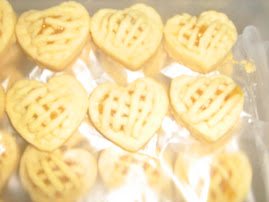pagi ni sebelum ke opis aku dpt sms dpd shbt.....nampaknya shbt diuji dgn kesihatan lagi. Sahabat, aku doakan agar dikurniakan kesihatan yg baik dan dipermudahkan segala urusan oleh Allah s.w.t. Cepat2 la gi cek doktor dan berubat apa yg boleh diusahakan. Kena rehat juga tu, cubalah amik cuti bersama keluarga. Kerja ni sampai bila tak kan abis, aku refer kat diri aku jugaklah....tapi dah keje dgn org kan, bukan keje sendiri ..........emm....
hari ni aku kat opis belek2 paper2 aku ni...intai2 bhn2 yg ada.....harini last kat opis buat keje, esok graduation day. Sabtu pagi, Insya-Allah aku akan pulang ke kampung untuk bercuti selama 2 minggu....emmm.....tgh plan nak panjangkan cuti hehehe.....err buat2 lupa la pogram ujung jun ni hehehe.
sempat le berbual2 dgn kwn2 di opis ni tadi....ramai juga yg nak balik bercuti di Canada. aku dah lama ngidam maple syrup ni...aritu mkn fudge yg ada inti cream dibuat dp maple syrup, mmg sedap. aku pun tanyakan sorang ni, hometown dia kat ottawa.aku pesan maple syrup perasa buter bak kata kak Zeem, perasa ni sedap. wah nampaknye kwn aku ni tak tahupun maple syrup ada beberapa perasa... then salah sorang kwn asal dp toronto terus bersmngt ckp psl maple syrup dan terus search web site..maka nampakla bermcm2 perasa ada, strawberry,orange dlln. wah Kak Zeem, akak lagi terer dp minah canadian bab perasa ni hehehe.
maple syrup ni mcm madu la jugak, sedap sgt.cuma fakta yg baru aku tahu dan sgt menarik ini rupanya cecair yg keluar dp bgt pokok maple itulah syrup nya. cara nak dptkan syrup ni mcm kita toreh pokok getah untuk dptkan susu getah. interesting. kak Zeem, klu kwn ni terlupa nak beli nanti, akak tlg post ye hehehe.
nak tahu serba sedikit pasal maple syrup ni boleh baca petikan artikel di bawah, sumber dp wekepedia.
Maple syrup is a sweetener made from the sap of maple trees. In Canada, the United Kingdom and the United States it is most often eaten with waffles, pancakes, and French Toast. It is sometimes used as an ingredient in baking, the making of candy, preparing desserts, or as a sugar source and flavoring agent in making beer. Sucrose is the most prevalent sugar in maple syrup. It was first collected and used by Native Americans/First Nations and was later adopted by European settlers.[1]
Native Americans
Pre-Columbian Native Americans, living in the northeastern part of North America, were the first people known to have produced maple syrup and maple sugar. According to their oral traditions, as well as archaeological evidence, maple tree sap was being processed for its sugar content long before Europeans arrived in the region.Native Americans also used earthenware cooking pots to boil the maple sap. They would heat it over simple fires protected only by a roof of tree branches. This was the first version of the sugar shack.[citation needed] Over time, the sugar shack became more than just a place where maple syrup was produced, it became a place to celebrate; a gathering where a traditional meal could be enjoyed by family and friends.
Maple syrup production is centred in northeastern North America, and is commonly associated with Quebec in Canada; however, given the correct weather conditions, it can be made wherever maple trees grow such as Vermont in the United States. Usually, the maple species used are the sugar maple (Acer saccharum) and the black maple (Acer nigrum), because of a high sugar content in the sap of roughly two percent. A maple syrup production farm is called a "sugar bush" or "the sugarwoods". Sap is often boiled in a "sugar house" (also known as a "sugar shack" or cabane à sucre), a building which is louvered at the top to vent the steam from the boiling sap.
Traditional tap -
Two taps in a maple tree, using plastic tubing for sap collection.
Traditionally, maple syrup was harvested by tapping a maple tree through the bark and into the wood, then letting the sap run into a bucket, which required daily collecting; less labour-intensive methods such as the use of continuous plastic pipelines have since superseded this, in all but cottage-scale production. Production is concentrated in February, March, and April, depending on local weather conditions. Freezing nights and warm days are needed in order to induce sap flows. The change in temperature from above to below freezing causes water uptake from the soil, and temperatures above freezing cause a stem pressure to develop, which, along with gravity, causes sap to flow out of tapholes or other wounds in the stem or branches. To collect the sap, holes are bored into the maple trees and tubes (taps, spouts, spiles) are inserted. Sap flows through the spouts into buckets or into plastic tubing. Modern use of plastic tubing with a partial vacuum has enabled increased production. A hole must be drilled in a new location each year, as the old hole will produce sap for only one season due to the natural healing process of the tree, called walling-off. Maple sap is collected from the buckets and taken to the sugar house; if plastic tubing and pipelines are used, then the pipelines are arranged so that the sap will flow by gravity into the sugar house, or if that is not possible, into holding tanks from which the sap is pumped or transported by tanker truck to the sugar house.

 Thursday, June 4, 2009
Thursday, June 4, 2009



